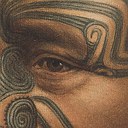0190 Māori and Portraiture
Identifiers (Article)
Identifiers (Files)
Abstract
Gottfried Lindauer’s Māori portraiture offers a distinctive example of a bicultural artistic practice in nineteenth-century New Zealand, one serving both European and indigenous patronage to a degree that is unparalleled in other British settler societies. This essay places the example of Lindauer into a wider context of Māori enthusiasm for and engagement with the genre of portraiture, ranging from the voyaging artists of the precolonial period to the emergence of the ‘ethnological’ portrait in the later nineteenth century. In charting the evolving relationships between subjects, artists, photographers and collectors, what do we learn about Māori attitudes to portraiture?
Statistics


License

This work is licensed under a Creative Commons Attribution-NonCommercial-NoDerivatives 4.0 International License.



